Kia Sportage: Transmitter
Repair procedures
Inspection
1. Check that the red light flickers when the door lock or unlock button is pressed on the transmitter.
2. Remove the battery (A) and check voltage if the red light doesn't flicker.
Standard voltage : 3V
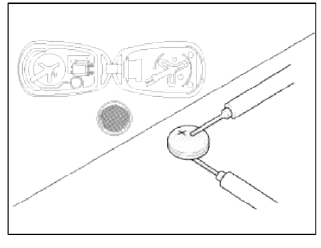
3. Insert the battery (A) into the tester (09954-2pl00).
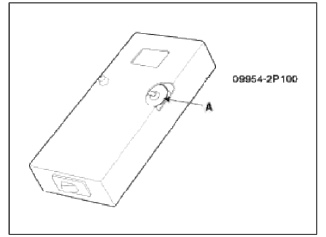
4. Push the test button and If "0.00" is displayed on screen, it means that the battery voltage is 2V or less.
5. If "L" is displayed on screen, it means that the battery is low power and it needs to replace.
6. To prevent the discharge of electricity, turn the tester power off.
7. Replace the transmitter battery with a new one, if voltage is low power then try to lock and unlock the doors with the transmitter by pressing the lock or unlock button five or six times.
8. If the doors lock and unlock, the transmitter is O.K, but if the doors don't lock and unlock, register the transmitter code, then try to lock and unlock the doors.
9. If the doors lock and unlock, the transmitter is O.K, but if the doors don't lock and unlock. replace the transmitter.
WARNING
An inappropriately disposed battery cart be harmful to the environment and human health.
Dispose the battery according to your local law(s) or regulation.
Transmitter Code Registration (Using Code Saver)
1. Open Door.
2. Connect POWER (B+) and GND, signal line of Code Saver.
3. If connection is normal, signal lute is activated and RED LED turns ON.
4. If switch of Code Saver turns ON, data via signal line will be transmitted.
5. BCM enters into Code Save mode when it receives data from Code Saver and send Code Save Start signal via signal line.
6. Code Saver turns Green LED ON when it receives Code Save Start signal.
7. When you press Lock or Unlock button of transmitter, BCM will save Codes.
8. If there are 2 transmitters for Code Saving, register by performing item 7).
9. If switch of Code Saver turns OFF or is disconnected, Code Saving mode will be finished.
Transmitter Code Registration (Using GDS)
1. Connect the DLC cable of GDS to the data link connector (16 pins) in driver side crash pad lower panel, turn the power on GDS.
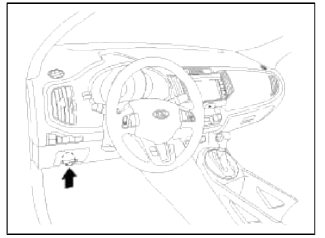
2. Select the vehicle model and then do "CODE SAVING".
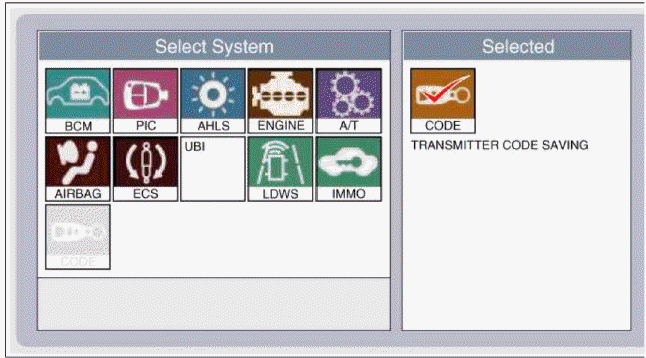
3. After selecting "CODE SAVING" menu, button "ENTER" key, then the screen will be shown as below.
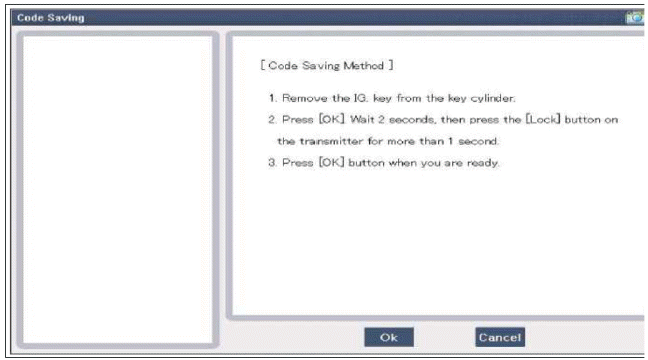
4. After removing the ignition key from key cylinder, push "ENTER" key to proceed to the next mode for code saving
Follow steps 1 to 4 and then code saving is completed.
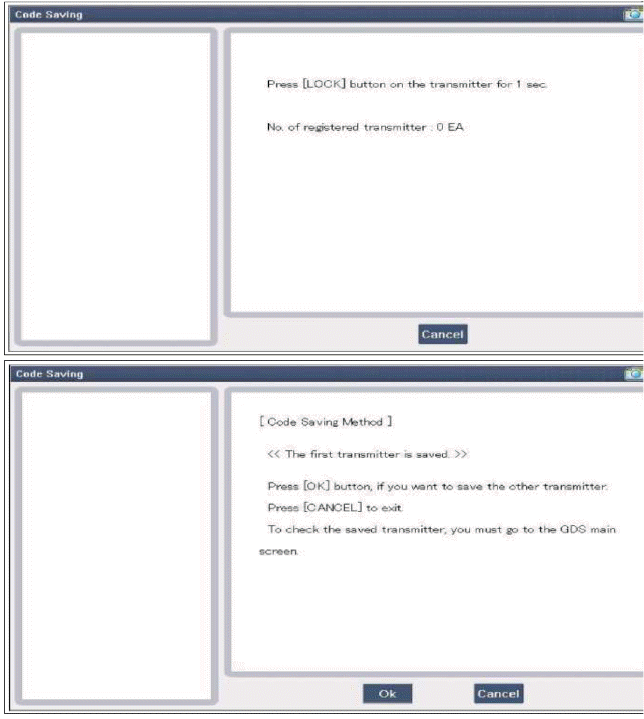
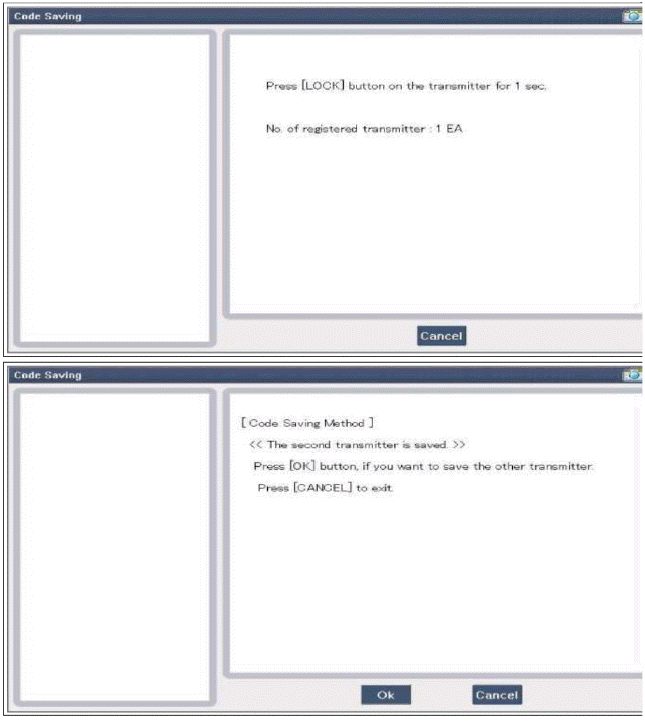
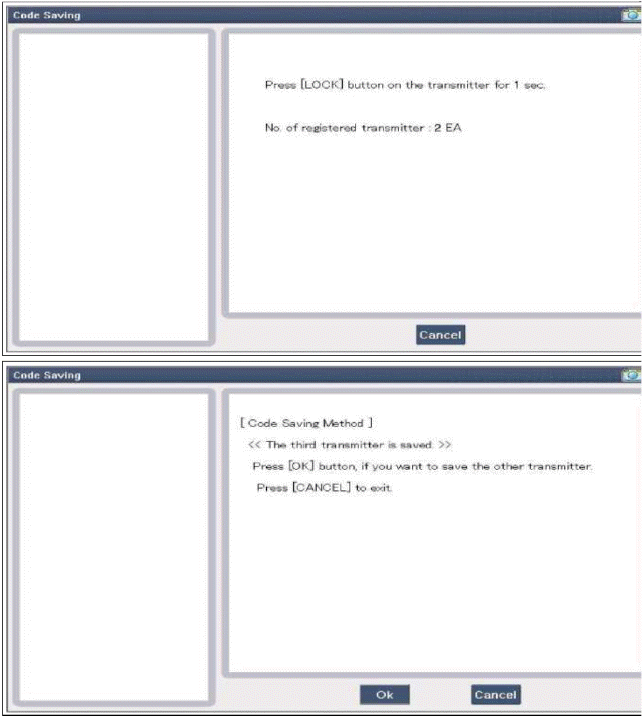
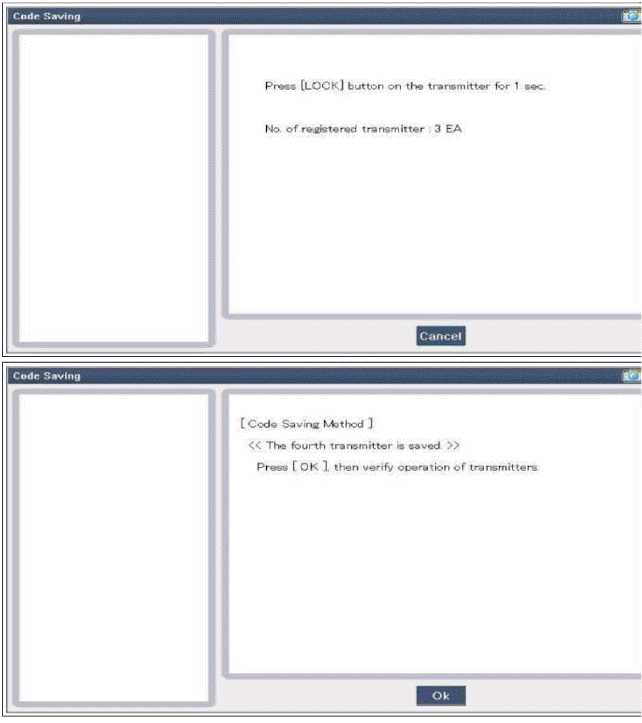
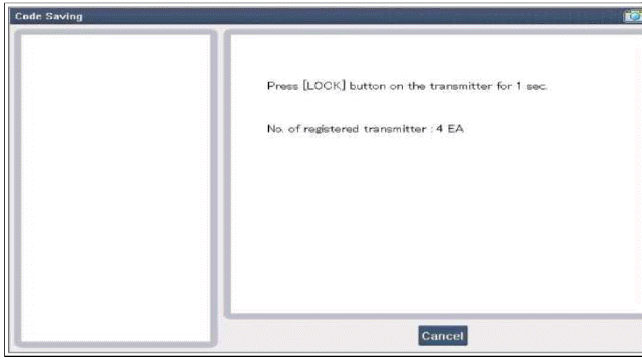
READ NEXT:
 Specifications, Schematic Diagrams, Description and Operation
Specifications, Schematic Diagrams, Description and Operation
Specifications
Specifications
Electrical Performance
Schematic Diagrams
Circuit Diagram
Description and Operation
Description
Body control module receives various input
 Exterior Lighting Control
Exterior Lighting Control
Tail Lamp Control
1. This function describes the following features
Turn on and off Tail Lamp by switch input.
Turn on and off Tail Lamp in Auto Light Control command.
Automatically cut
SEE MORE:
 Brake Assistant System(BAS)
Brake Assistant System(BAS)
The Brake Assistant System provides
additional pressure when the brake
pedal is momentarily and strongly
depressed in a situation sudden braking
is required while driving.
The Brake Assistant System reduces the
time for ABS(Anti-Lock Brake System)
control to enter and consequently
reduces
 Shift Lever
Shift Lever
Components and Components Location
Components
Shift lever knob & boots
assembly
Shift lever assembly
Control cable assembly
Manual control lever (T/M side)
Repair procedures
Removal
Shift Lever Assembly Replacement
1. Remove the center console assembly. (Refer to "
Content
- Home
- Kia Sportage - Fifth generation (NQ5) - (2022-2025) - Owner's Manual
- Kia Sportage - Second generation (JEKM) (2005-2015) - Body Workshop Manual
- Kia Sportage Third generation (SL) - (2011-2016) - Service and Repair Manual
- Sitemap
- Top articles